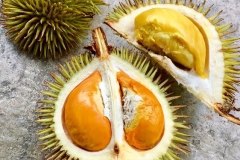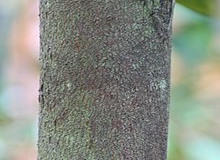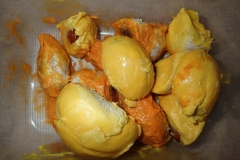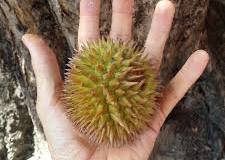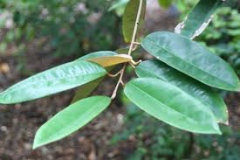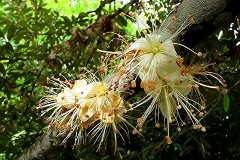Health Benefits of Durian
- Combats bacterial Infection
The outer skin or rind of the fruit has anti-bacterial properties. Study shows that polysaccharide, a carbohydrate in outer skin combats oral pathogens Streptococcus mutans and Aggregatibacter actinomycetemcomitans. It helps to prevent its growth, disrupts structure and prevents dental caries. Polysaccharides prevent the interaction of bacteria with other healthy cells of the body. It helps to maintain proper oral hygiene. Moreover, the rind has anti-bacterial compounds preventing the growth of Klebsiella pneumonia which is harmful when spread to other parts of the body besides intestines.
- Anti-inflammatory activity
Inflammation has a crucial role in initiation and progression of various diseases. The bioactive compounds found in durian fruit have anti-inflammatory properties. Durian pulp contains bioactive compounds such as carotenoids, flavonoids, flavonols and anthocyanins. It helps to inhibit synthesis and activity of pro-inflammatory compounds in the body and lowers overall inflammation. It blocks action of certain enzymes which are involved in production and also activity of inflammatory compounds.
- Liver health
Durian fruit has high content of antioxidants, nutrients and bioactive compounds. The presence of quercetin inhibits toxic chemical induced liver damage. It improves liver structure, regeneration of liver cells and lowers collagen content which causes liver hardening. The decrease in collagen content results the structure of liver to become normal and improves liver function. It has antioxidants which prevents free radical effects. The presence of high oxidative stress depletes glutathione, a major antioxidant in liver cells. The intake of durian fruit restores glutathione levels which detoxifies liver and also strengthen it.
- Improves lipid profile
Polysaccharide gels found in this exotic fruit are rich source of soluble fiber which helps to entrap liquids and lowers its release in the bloodstream. Furthermore, the presence of antioxidants prevents rise of plasma lipid level and also inhibits oxidation of LDL molecules. It prevents the chances of clot in arteries and blockage of arteries.
Culinary uses
- Durians are consumed raw or combined with other tropical fruits such as mango, guava, pineapple and papaya.
- It is also used to make smoothies with half cup of durian flesh and half cup of milk.
- Add it to soups, curries to enhance food preparations.
Recommended intake
- For healthy individuals: 80-100 grams
- For diabetes mellitus: Around 2-3 durian seeds.
Precautions
- High intake of durian fruit causes abdominal discomfort.
- People allergic to durian fruit should avoid it.
References:
https://www.itis.gov/servlet/SingleRpt/SingleRpt?search_topic=TSN&search_value=500686#null
https://www.ayurtimes.com/durian/
Comments
| Yellow Durian Quick Facts | |
|---|---|
| Name: | Yellow Durian |
| Scientific Name: | Durio graveolens |
| Colors | Orange-yellow |
| Shapes | Globose to ellipsoid, 10 - 15 cm in diameter |
| Taste | Buttery, sweet |
| Name | Yellow Durian |
|---|---|
| Scientific Name | Durio graveolens |
| Common/English Name | Indonesia: durian burung, durian rimba, tinambela (Sumatra); Indonesia, Malaysia: taula, durian anggang, ta-bela (Dayak, Borneo), durian isa (Iban, Borneo) Malaysia: durian burong (Malay, Sarawak), durian merah (Peninsular), Thailand: thurian-rakka (peninsular) |
| Soil | Well drained, slightly acidic soil |
| Plant Size | 50 m tall |
| Leaf | Elliptical to oblong, 10-26 cm × 4-10 cm |
| Fruit shape & size | Globose to ellipsoid, 10 – 15 cm in diameter |
| Fruit color | Orange-yellow |
| Flavor/aroma | Distinctive and robust |
| Fruit Taste | Buttery, sweet |
| Seed | Ellipsoid, glossy-brown, 4 cm x 2 cm |



